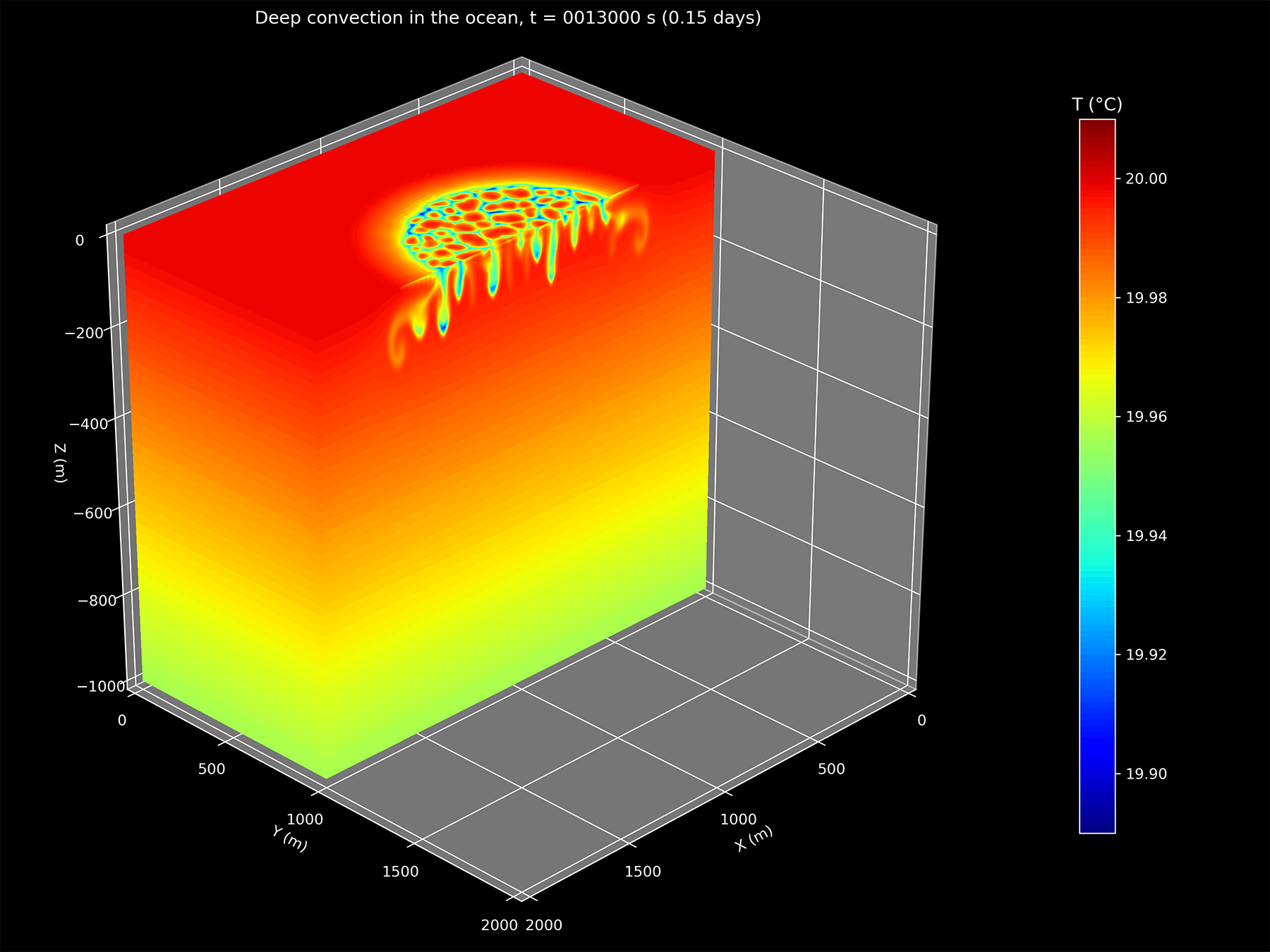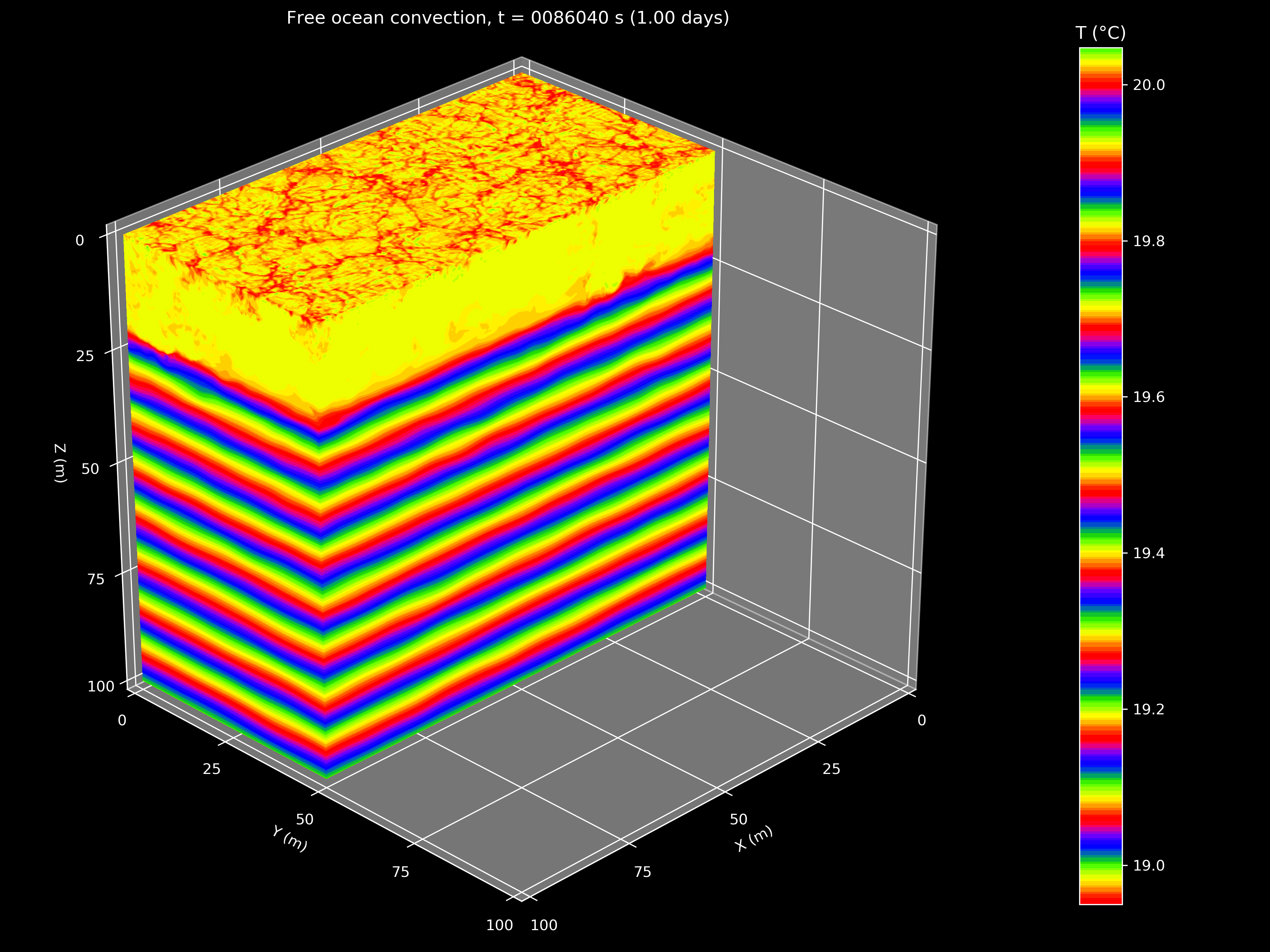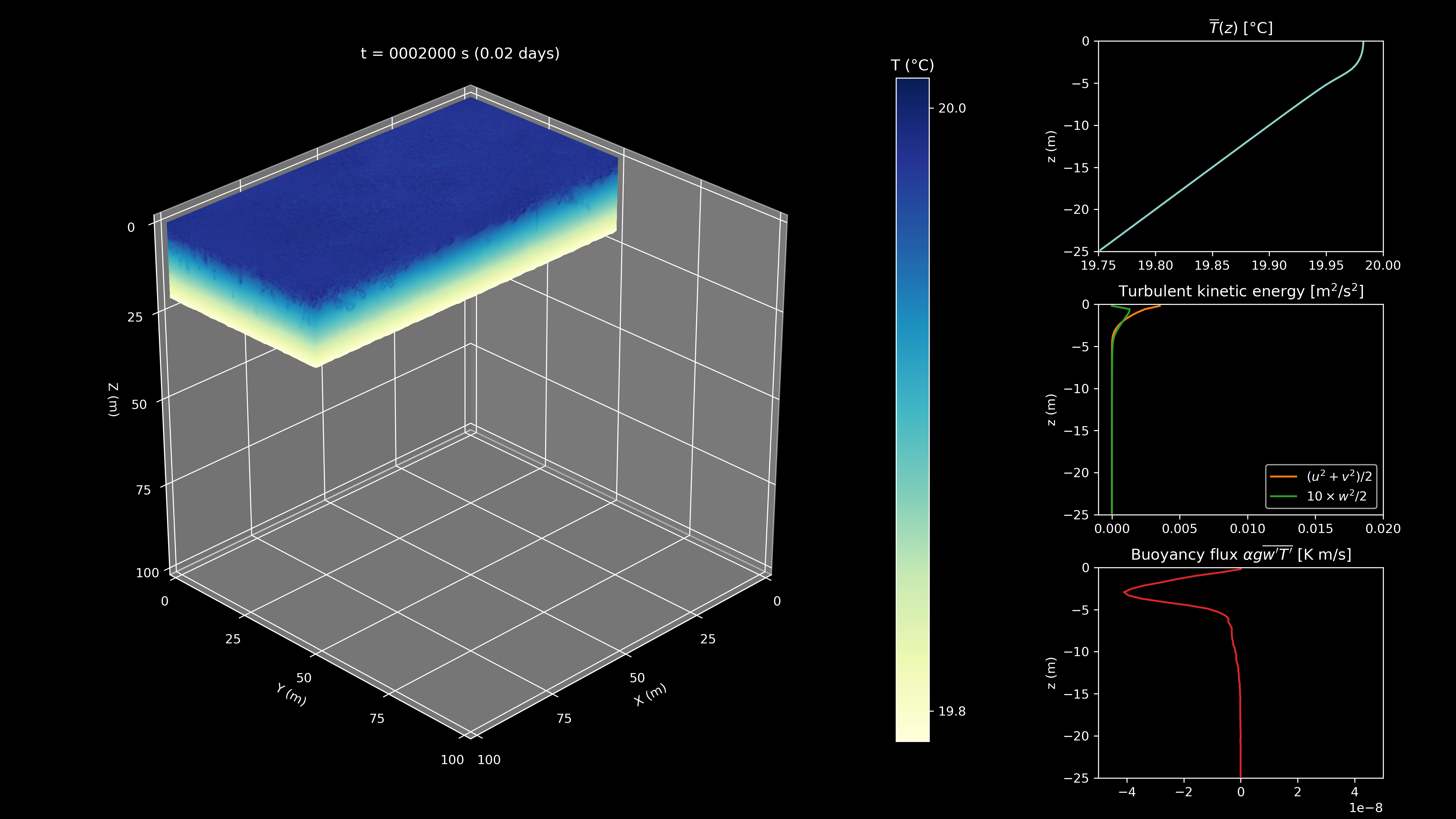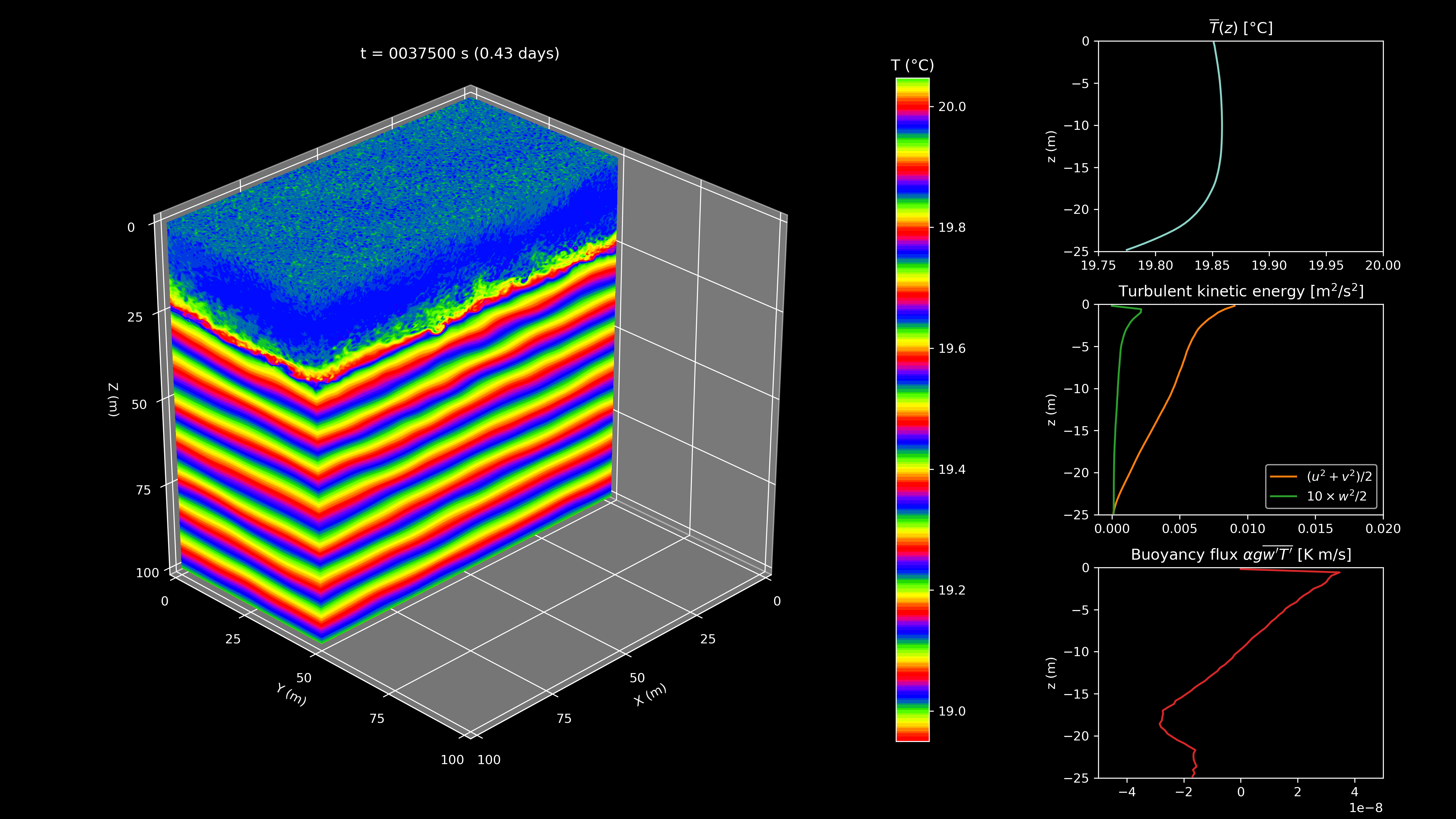Gallery
Collection of cool movies!
Deep convection
An idealized simulation of deep convection in the ocean. The simulation employs a resolution of 256x256x128 volumes in a 2x2x1 km horizontally periodic domain. Heat is sucked out of the ocean surface within a cooling disk of radius 600 m at a rate of 800 W/m² which cools the surface water and making it denser. This cold dense water then sinks into the ocean interior, initiating a convective process that penetrates deep into the ocean.
This deep convection process can happen when a cold storm passes through warmer waters, which happens for example in the Labrador Sea.
The video shows the temperature field and the domain is sliced in half so the convection happening under the cooling disk is clear.
Free convection
An idealized simulation of free convection in the ocean. The simulation employs a resolution of 256x256x256 volumes in a 100x100x100 m horizontally periodic domain. Heat is sucked out of the ocean surface at a rate of 75 W/m² which cools the surface water and making it denser. This cold dense water then sinks into the ocean interior, initiating a convective process that keeps mixing the upper layer of the ocean. This "mixed layer" has a relatively constant temperature and keeps deepening as the surface is cooled.
The video shows the temperature field and the domain is sliced in half.
Winds blowing over the ocean
An idealized simulation of a strong wind stress acting on the surface of a stratified ocean. The simulation employs a resolution of 256x256x256 volumes in a 100x100x100 m horizontally periodic domain. A pretty strong wind stress of 0.1 N/m² is applied in the x direction which mechanically mixes the upper layer of the ocean. This leads to a "mixed layer" of constant temperature near the surface of the ocean. You can also see the onset of Kelvin-Helmholtz instabilities as the mechanical mixing sets in.
The video shows the temperature field in the top 25 meters and the domain is sliced in half for visualization. The line plots show the horizontally averaged temperature profile (top right), horizontally averaged turbulent kinetic energy (middle right), and the horizontally averaged buoyancy flux (or temperature flux).
Free convection with wind stress
An idealized simulation of a strong wind stress acting on the surface of a stratified ocean along with a cooling flux that sucks heat out of the surface. The simulation employs a resolution of 256x256x256 volumes in a 100x100x100 m horizontally periodic domain. A pretty strong wind stress of 0.1 N/m² is applied in the x direction which mechanically mixes the upper layer of the ocean. Also, heat is sucked out of the ocean surface at a rate of 75 W/m² which cools the surface water and making it denser. This cold dense water then sinks into the ocean interior, initiating a convective process that keeps mixing the upper layer of the ocean. This leads to a "mixed layer" of constant temperature near the surface of the ocean. You can also see the onset of Kelvin-Helmholtz instabilities as the mechanical mixing sets in.
The video shows the temperature field and the domain is sliced in half for visualization. The line plots show the horizontally averaged temperature profile (top right), horizontally averaged turbulent kinetic energy (middle right), and the horizontally averaged buoyancy flux (or temperature flux). The unusual periodic prism colormap is used to show the fine details at the surface as it cools and the layers of different temperatures (the isopycnals) being perturbed by internal waves.



